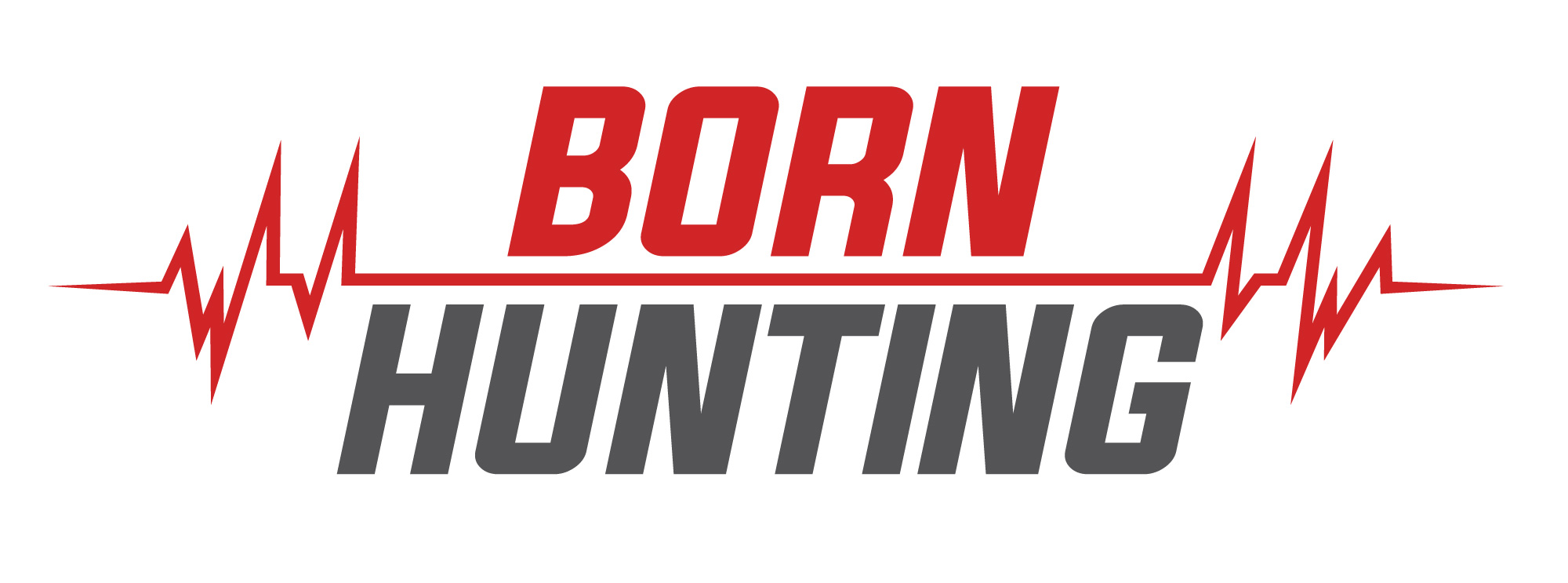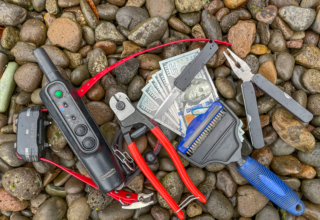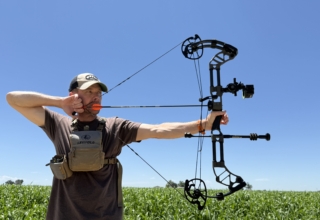The pronghorn decoy window is often limited to the rut. That is unless you follow the to-come early-season decoy advice. If you do, you’ll likely end up with backstraps for the grill and horns for the wall.
by Jace Bauserman
When it comes to North American big game, there isn’t much that hasn’t been written about. More tip and tactic articles have been penned than there is head-banging at a heavy-metal concert.
Occasionally, though, when a hunter steps outside the box and starts experimenting, a new do this, but don’t do that article comes about. That’s the case here. While hunting pronghorn with my good buddy and bowhunting legend, Danny Farris, a few years back, we stumbled onto something.
Like me, Danny likes to get the game close. Also, like me, Danny knows the best way to run carbon through an early-August pronghorn when the temps are torrid is to sit a ground blind over a well-used water source.

However, that August hunt didn’t allow us to sit over water. We had the heat, that’s for sure. But two days before the August 15 opener, the heavens opened, and water fell in buckets from the sky. Every natural and artificial pond on the prairie was full, and so was every puddle, depression, and creek drainage.
Up to that massive rain, the summer was a dry one. This meant that calf-high prairie grasses barely covered our boots, making spot-and-stalk difficult.
I’d love to take credit for this next part, but I can’t. Like Danny, I consider myself a pronghorn expert. I wrote a book about hunting pronghorn, so I must be an expert, right? But for this outside-the-norm tactic, Mr. Danny Farris gets all the credit.
We were watching numerous pronghorn. There was a buck with does, lone bucks, and a few bachelor groups roaming between four large pastures. Our scouting told us, though, that at one point during the day or another, all made their way to an open sandy spot dotted with sunflowers. When the pronghorn reached this spot, they bedded. I think it was a combination of the soft sand, the slight rise in the landscape that boosted their vision, and the sprinkled sunflowers, which created a little shade.

While driving back to his house that night, Danny said, “Bauserman, tomorrow, we are going to rock out with the flock out.”
I laughed and said, “We aren’t hunting geese, buddy.”
Danny explained that the plan was to use our normal bow-mounted Stalker Buck Pronghorn and Stalker Doe Pronghorn decoys from Ultimate Predator Gear, just like we would during the rut. However, Danny wanted to use the decoys in combination with a 3-D buck decoy and five or six Montana Decoy Antelope Buck and Doe decoys.

He wanted to create a herd, and he wanted to set the herd up in the dark right where every pronghorn in a two-square-mile area ended up at one point or another. Pronghorn are super curious creatures. I killed a buck several years ago on a spot-and-stalk mission that spotted me in the grass, walked right at me, and then let me draw and shoot him. They are quirky creatures, for sure.
The following day, we created a mock herd. I love the decoying game, especially when it involves a bow-mounted decoy from Ultimate Predator Gear. You’re part of the decoy scheme when you put one of these heavy-duty UV-resistant decoys on your bow. The image of the animal on the decoy is an actual image, and the shoot-through window and mounting style mean guaranteed arrow clearance and total body coverage. The decoy doesn’t mount to the side to create extra offset weight. Instead, these fold-up, uber-light fakes mount to the limbs and cover the riser. They are remarkable.
When dawn broke, we had pronghorn all around us. Over the next several hours, does and small bucks came and went. The plan worked perfectly, and Danny and I were having a blast.
One bit of trouble we encountered, as I don’t want anyone reading this to think this decoying technique is Harry Potter’s magic wand, was speed goats winding us. Several times, does worked behind us, saw our outlines, smelled us, and did their kazoo snort for an extended period.
Twice, the shooter buck I was after was just out of range when the does bust. The cool thing was that buck still saw the decoys and wasn’t overly alarmed. Pronghorn run, stomp, and blow all the time. They encounter coyotes and other things on the prairie. If you get busted, the game isn’t always over.
Finally, towards evening, the buck, who had separated from his does, wandered in. It’s important to note that I’ve used this technique several times and have yet to have a speed goat come running in like they will in the rut. Stay patient.
When the buck reached 53 yards, he started to get nervous. Danny was running the video camera, and when the arrow sailed over the buck’s back, I instantly got irritated. I shoot my bow almost daily and pride myself on making good shots when an opportunity is earned.
Danny quickly told me the buck ducked the arrow, and later, when I watched the footage, I felt a little better. Still, though, it was my fault. Knowing the buck was edgy, I should have held low on the heart and not center lungs.

Today, Danny and I have used this technique several times with excellent success. If water isn’t an option or you simply want to try a new technique, this one is fun and exciting and works.

A few bonus tips, we’ve learned over the years that we didn’t use on that first hunt include wearing a white long-sleeved or short-sleeved shirt and bringing a white towel.
Pronghorn have a lot of white on their body, and for some reason, they seem drawn to the color. A white shirt behind a decoy adds to the realism of the decoy setup. We also use a white towel, tuck it into our pants, and hang it over our butt to create realism. While one hunter watches the goat(s) through binoculars, the other crawls around amongst the decoys. The RIGHT movement is good, and crawling around can stimulate a buck and get him to break and come in.

Enjoy using this tactic. We are on the brink of archery pronghorn seasons across the West. Often, those willing to step outside the norm find success.












